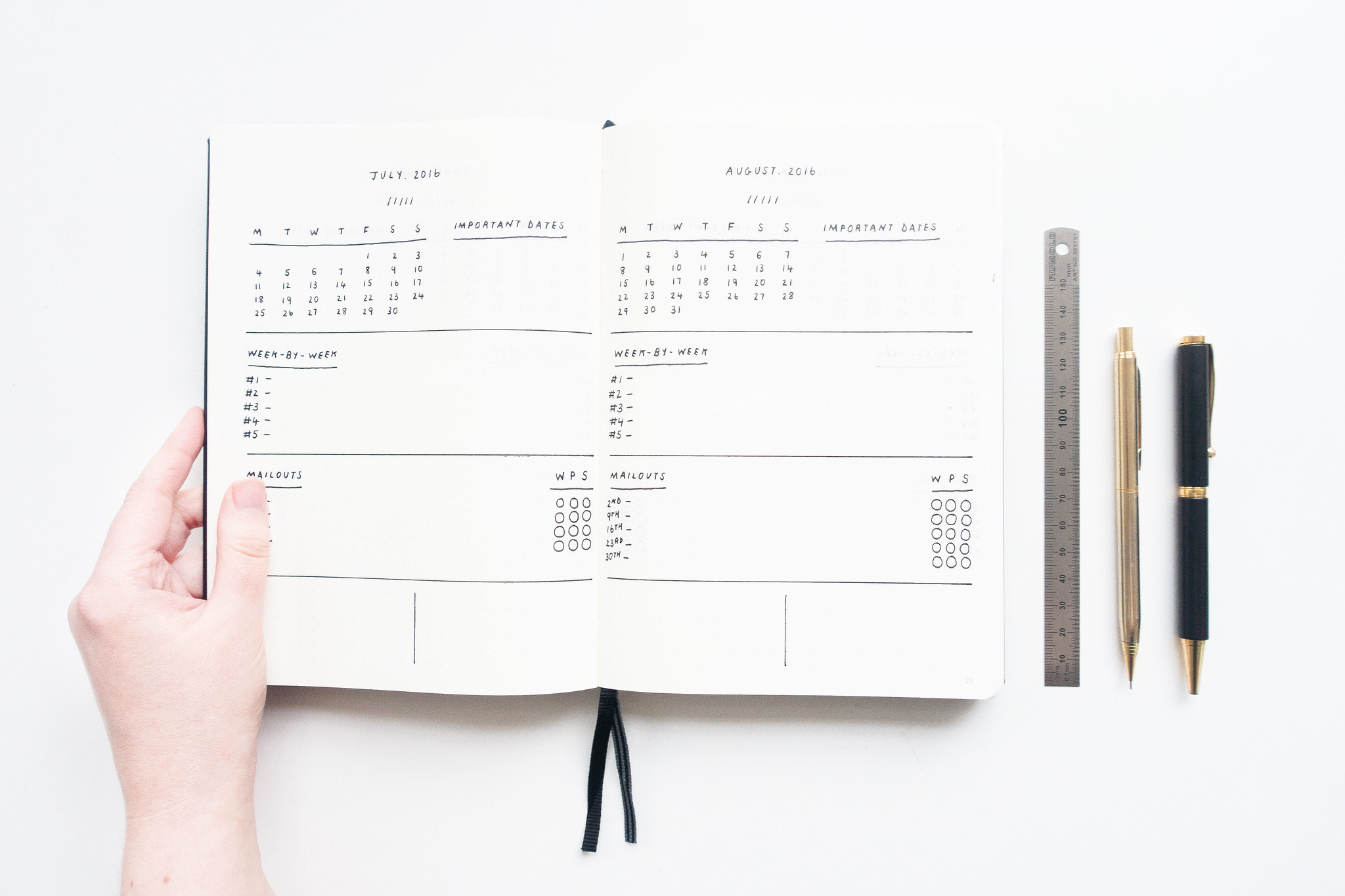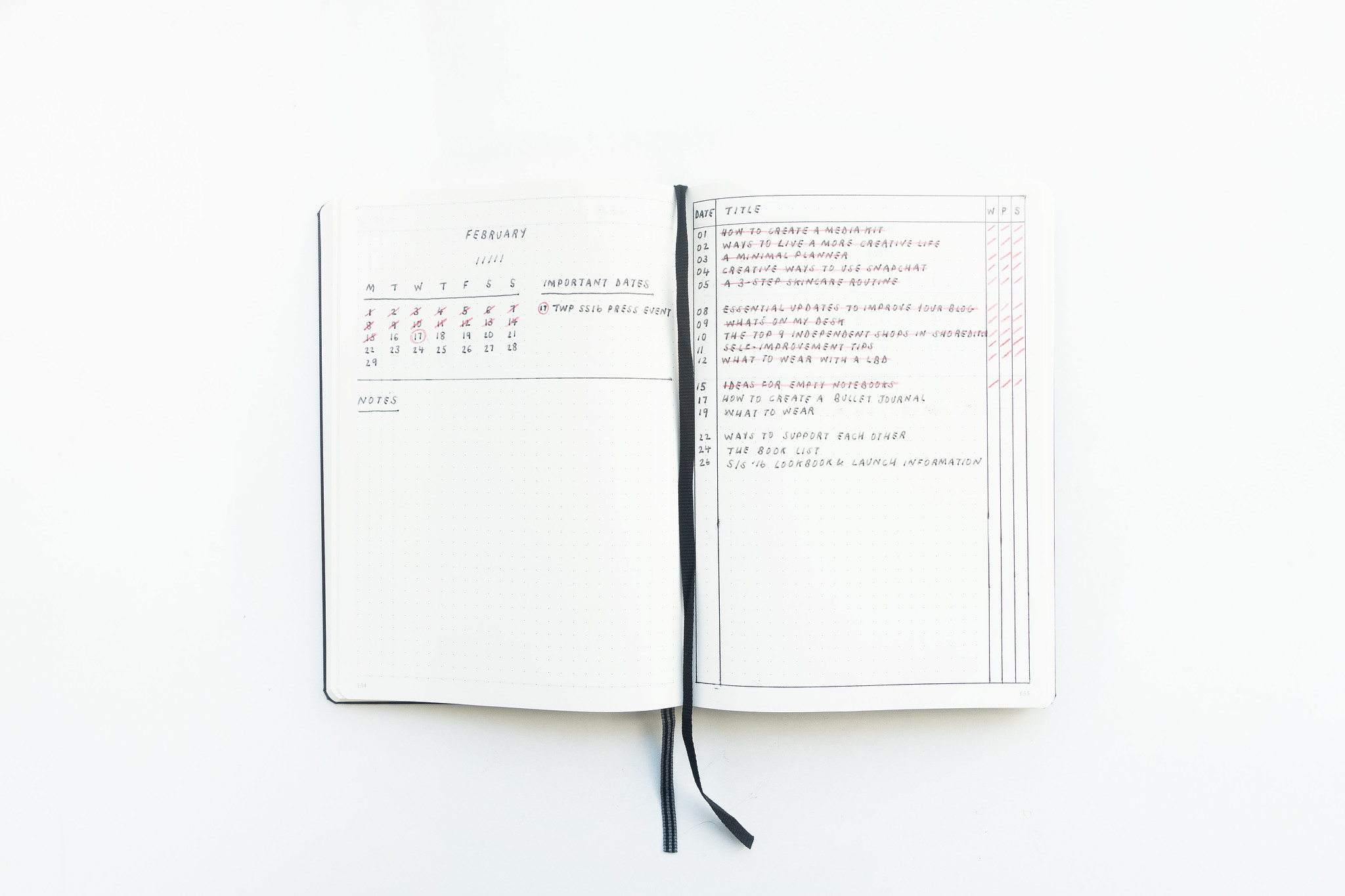
What Is A Bullet Journal?
Bullet journalling is a customisable system for organising tasks, lists, and duties. By developing a system that works for you, organisation and productivity can be enhanced. Since it's personalised there is potential for a bullet journal becoming more useful than a shelf-bought planner or diary. The Bullet Journal explains the bare bones method of setting up a journal and how it works.
The bullet journal method has become super popular that journalers spend great deals of time on their journals creating whole spreads for specific needs like budget spreadsheets, meal plans, daily diary entries, and goal setting - it's no longer just about keeping track of tasks.
Why Use A Bullet Journal?
The Bullet Journal method isn't for everyone, it's an analogue system where we have access to a whole range of digital apps that would do the same job but better? Yet the act of writing down tasks and the ritual of marketing them as done can innovate the way we work. A Bullet Journal isn't there to replace your smartphone it's there to support it when it doesn't work in the way you need it to.

How To Create A Bullet Journal
Watch the set up process on the Bullet Journal website, this is the basic list-keeping bullet journal method.
1. Decide On A Notebook
The right notebook is super important and takes a bit of consideration. While cheap notebooks will do, a hardback cover with quality pages will make your journal more durable. The Moleskine and Leuchtturm ranges are some of the most popular, and choosing grid or dot pages are recommended for ease of use.
2. Decide On A Use
Is your Bullet Journal going to be purely for list making? Or is it going to an all-in-one-planner? Knowing exactly what your journal is going to be a home for is important for creating a functional journal. It's tempting to throw everything into your journal but this can be overwhelming and prevent the system working for you. Your bullet journal should help out where digital systems didn't work; figure out exactly how you need the bullet journal to work for you and decide on its use.
3. Plan Out Pages
Planning out your journal can help prevent errors and torn out pages; write each page title on a sticky note and place it on each of the pages so it's easy to move things around until you're ready to commit to the layout. Remember to include an index at the beginning of the journal and number the pages (the Leuchtturm range includes a handy index already.) Don't worry if there is a lot of empty space, focus on including only the pages you really need - don't fill space for the sake of it. As you use your Bullet Journal you will discover which pages work, which ones don't, and which pages you need to add in. Having plenty of room to do this makes the whole process much more fun. Once you're happy with the layout, start filling in the pages.
3. Create Key Signifiers
Developing signifiers - symbols that indicate what a task is and its current state - is useful for glancing at your lists and finding exactly what you need by looking at the symbols rather than the text. An example of a signifier would be an empty box next to a task, which you then colour in once the task is complete. Creating signifiers that make sense for you is important so don't be tempted to look at other people's... there are so many methods out there things can get confusing! Perhaps symbols work for you, or colour coding, or perhaps a mix of the two - find a method that works and try it out, you can always change it up later but try to keep it as simple as possible.
A Side Note
Bullet Journalling has become so popular now that the whole process has become quite convoluted; once you start digging around on the internet for ideas from other Bullet Journal users, things get overwhelming. The beauty in the Bullet Journal method is its simplicity. The whole process is supposed to speed up your process not slow it down; decorating a notebook with pretty handdrawn graphics might look beautiful but it's time consuming and goes against the purpose of creating an analogue system that challenges the efficiency of its digital alternatives. I would recommend avoiding searches to see what other people do with their Bullet Journals and find a functional layout that works for you.